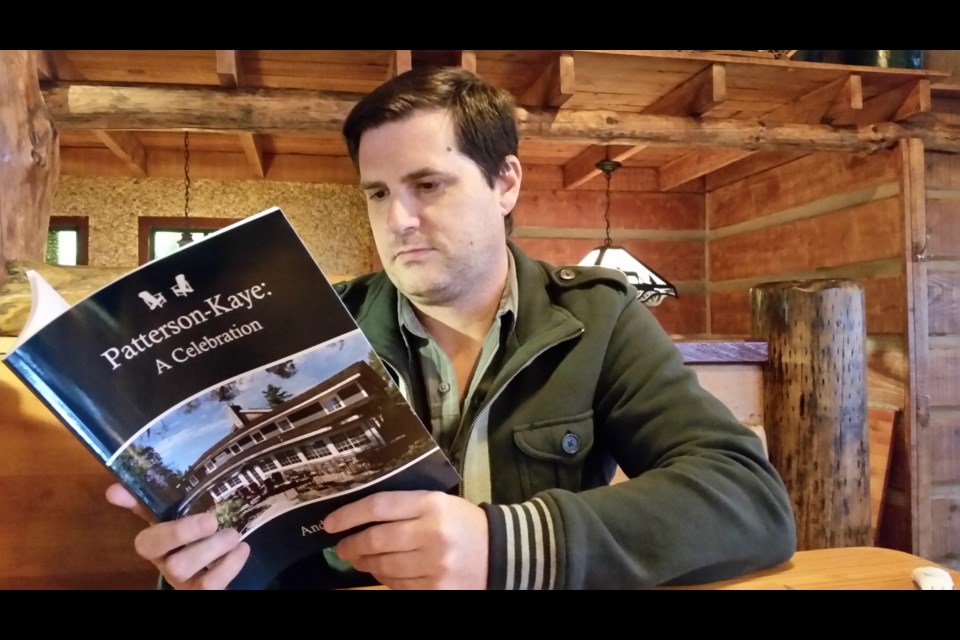Andrew Hind’s latest book brings to light a host of stories of forgotten and fading places, and he’s dedicated a chapter to the village of Desaulniers, northwest of Field, in West Nipissing. For fans of local history and ghost towns, Hind may already be on your shelf. He’s written over 30 books, most of which focus on aspects of Ontario’s history.
Earlier this month, Hind’s newest was released by Dundurn Press. Ghost Towns of Ontario’s Cottage Country details stories from 14 towns within Muskoka, Haliburton, and the Parry Sound, Nipissing, and Temiskaming Districts.
He’s no stranger to the subject, having written extensively about ghost towns and what he refers to as “faded communities” throughout our province. However, although he’s told many stories of ghost towns, he’s also written about haunted places, the old resorts and steamships of Muskoka and other aspects of local history.
His latest book highlights the vanished villages “that once prospered in the North.” The village of Desaulniers was perfect for the book, Hind noted, because once it was thriving, complete with “bustling main street,” but over time fell into a downward spiral.
Today, not much remains, save for one old building. However, after reading Hind’s book, one can see where the old sites stood, including the mill, the church – which itself caused great controversy in the village – to the general store. All of which have been lost to time, although Hind’s book preserves what remains of the ghost village.
He explained how he goes about saving these stories, and for him, the best way to find information is to talk with those who know. He spent some fine hours chatting with some of the relatives of those who first broke ground in Desaulniers.
Hind mentioned the Serre Family were one of the first in the area, then “a wave of eager settlers” came in the early 1890s. His chapter mentioned the Joanis family, the Courchesne’s, the Bigra’s, the Vallieres’ the Quenneville’s and others who farmed and worked the land.
“It was a difficult life at first,” Hind noted, but eventually things picked up and a rail line even came through the village. Over time, the wheel of fortune changed, and Hind outlined the story with an attention to the people who lived it.
Fans of ghost towns may know of Ron Brown’s books, an historian and author that Hind admits is a pillar of ghost town studies in Ontario. Hind has a great respect for Brown’s research and writing, and for bringing a lot of attention to the subject.
However, he also felt there were more stories to be told. Brown’s books tend to include very brief sketches on each town – sometimes a page or two long. Hind felt that he could dig deeper into the human story and provide a more complete picture of the places being erased by the hands of time.
“A lot of it starts with the photos,” he explained. For instance, there was a photo of some people haying a field in Desaulniers and with the help of the museum in Sturgeon Falls, he was able to learn the name of some of the descendants.
He was able to find contact information for some of them, and he reached out to learn more about the history. Eventually, with enough calls and research, another chapter is completed.
“That’s the most important part of the process,” Hind said. “It’s easy to get names and records” from newspapers and old ledgers, “but to add any sort of personality or interesting anecdote” requires the personal touch.
With all stories passed down the line, one must watch for embellishments or exaggerations, so Hind is always sure to consult as many sources as possible to ensure an accurate depiction of his subject.
“Communities are changing all of the time,” Hind noted. He’s researched over 100 towns that have “faded away,” and his studies remind him of the importance of preserving these periods of our history. Today, a highway can by-pass a small village and have a devastating effect. Same if a large employee closes production in a smaller town.
“Change is an inevitability,” Hinds said, and after years of writing about people and places lost to time – places once thriving – he has gained a unique perspective on the power and effects change has.
For those interested, Hind’s book is on sale at the major online sellers, and you can follow him on Twitter at @DiscoveriesAM. Curious about Desaulniers? Take a ride to Field via Highway 17 and head West on Highway 539 for seven kilometers to reach Desaulniers Road. Be sure to pack Hind’s book for the trip.
David Briggs is a Local Journalism Initiative reporter who works out of BayToday, a publication of Village Media. The Local Journalism Initiative is funded by the Government of Canada.
